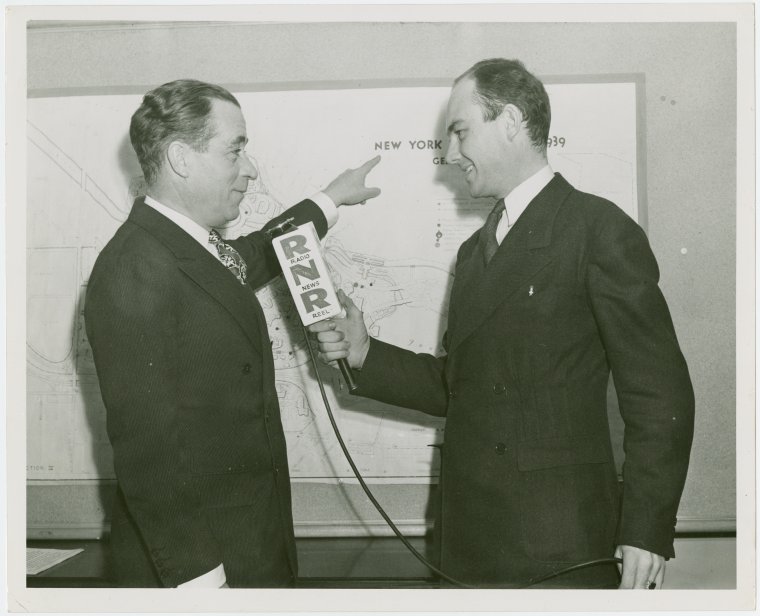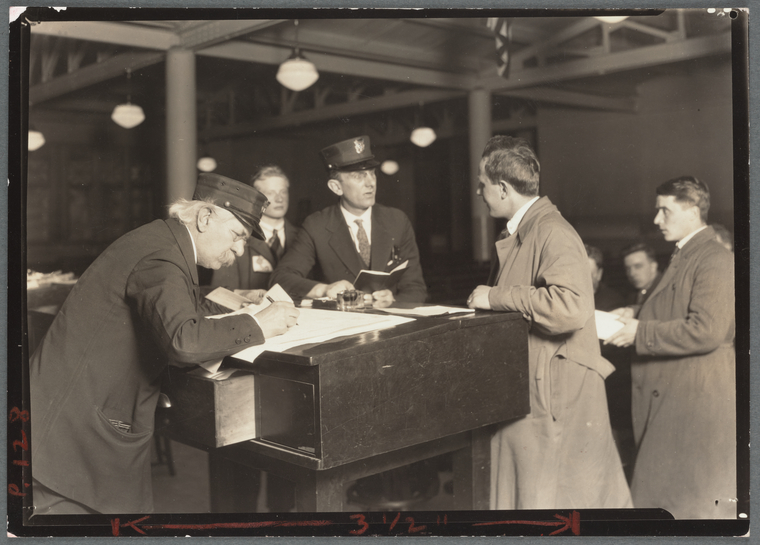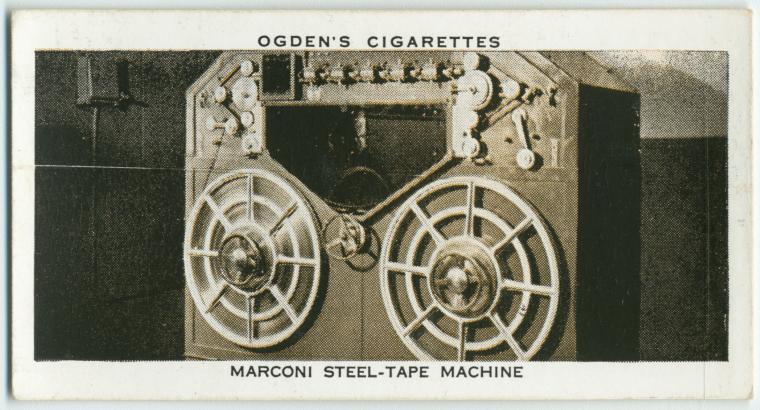What’s Your Story? Conducting Interviews for Genealogical Research
Family history research often begins with an interview. Speaking with your family to discover names, dates, locations, and important life events is one of the most important steps in delving into the genealogy world.
Key facts that are essential springboards to researching your family history may be held by few (often older) family members. Genealogy researchers frequently express their regret in not pursuing these family details when they had the opportunity. Bits of information requiring intense research may very well be found by asking your family a few questions. Don’t wait until you find yourself saying “if only I had asked Great Aunt Mary...” her mother’s maiden name, or her parents’ ancestral town, or [insert your query here]. Talk to your family now!

Alongside facts, personal narratives are just as important for genealogical and historical research. Stories help to provide personal insight to accompany the names and dates of genealogical research, and help to form a thorough account of someone’s life experiences. Consider your family as “eyewitnesses to history,” whose stories, memories, and traditions are important for both personal and historical contexts (Smithsonian Center for Folklife and Cultural Heritage).
Whether you’ve heard family stories countless times, or you’re curious to know more, it is important to sit down with your family and ask questions. You might be surprised by what you find in the process. Different relatives will provide varied bits of (sometimes conflicting) information. All of these pieces are essential in beginning the journey of uncovering your family history.
Interviews can provide you with a personal keepsake, a genealogical research tool, a piece of history, and an opportunity to learn more about your family.
My Experiences

I recently interviewed my grandparents in two respects:
- To learn the facts (names, dates, and locations concerning their family history)
- To record an oral history of their experiences growing up in Brooklyn and the Bronx
Fun facts I learned through this process include my great grandfather winning 2nd place in a city-wide “Most Popular Firefighter” contest, my grandfather witnessing the flag raising at Iwo Jima during his time in the navy, and (possibly exaggerated) stories of scandalous love confessions and acquaintances with the Mafia.
In addition to collecting information for genealogical research, interviewing your family presents an opportunity to better understand their lives. Taking time to speak about significant events, family traditions, and daily activities can be a fun, eye-opening experience. You may find yourself surprised by what you learn.
Where Do I Start?
Who?
Begin by interviewing older family members, but eventually aim to interview all of your relatives. Speak with people from different generations of your family. Stories and details may have been held and passed down by different lines of the family.
Preparation
- Before your interview, consider what you’d like to know. Are you interested in a particular time period/subject, or a full-scale account of your interviewee’s life?
- Conduct background research and plan questions.
- Build rapport with your participant. Describe the nature of the project and some of the topics you’d like to talk about to help put the interviewee at ease. Your relatives can prepare for dates, details, and stories they would like to share.

Logistics
- Schedule the interview for a time and place (either in-person or over the phone) that is most convenient to your relative.
- The interview should take place in a relaxed and comfortable environment (often at the interviewee’s home).
- If you don’t know the relative well, bring someone who is more familiar to him/her. This mutual person may make an introductory phone call on your behalf.
Conversation Tips
- Don’t interrogate your interviewees with details they might not remember, but instead think of the interview as a friendly discussion. Ask questions about names and dates as they arise naturally in conversation.
- Show interest, listen carefully, maintain eye contact, and provide encouragement with nods and smiles—try not to interrupt.
- Doing an activity alongside your relatives (e.g. walking, knitting, cooking) may help them reveal details more easily.
Documenting the Interview
Take notes of important details and questions you may think of while your participant is speaking. You may also like to record the interview using a digital recorder/camera (ask permission!) so you can focus on the discussion rather than writing.
What Questions Do I Ask?
Prepare questions to use as a structural guide for your interview. Background research will help you determine what you want to know, what subjects you’d like to cover, and will help you ask better questions.
Structuring your questions: Questions should be concise and open-ended, allowing the interviewee opportunities to elaborate. Ask follow-up questions and engage in conversation. (e.g. Could you explain? Can you give me an example?)
Start with the basics: Begin with biographical questions (e.g. What is your name? Where were you born? Where did you grow up?)

Genealogy focus: Ask names of family members and important dates (e.g. birth, death, marriage, date of immigration), and locations (e.g. where they lived and worked, native country and town).
Remembering family customs: Ask about family traditions, holiday celebrations, and cultural influences (e.g. my family had an aunt who draped homemade pasta all around her house).
Exploring local history: Ask for descriptions of hometowns, what it was like to grow up in a particular town and how it changed over time. Ask about community traditions and how the area was impacted by historical events.
Expect the unexpected: Don’t worry if the conversation strays from topics on your lists of prepared subjects. Allow interviewees the opportunity to tell their stories and speak freely—they may have experiences of which you were previously unaware. You can always redirect the interview to your original plan if strays too far off course.
Post-interview: Don’t forget to thank your participant. If the interview was recorded, give them a copy and have your participants sign release forms (Smithsonian Center for Folklife and Cultural Heritage).
Artifacts
Old photos and documents may help spark memories, prompt questions, and ease your interview into natural conversation. Ask to see your relatives’ old photos when you visit with them and bring photos of people who you'd like to discuss.
Artifacts can include photos, scrapbooks, letters, vital records, immigration documents, family Bibles, and a variety of other heirlooms.
Gathering artifacts can also jump start your family history research. Documents that would have required painstaking effort to locate may suddenly become available at the hand of a family member. In my case, a great aunt sent an 1880 Italian birth certificate (among other genealogical goodies), which provided essential clues and paved a path for future research. Simply asking your family for documents can solve mysteries and save you valuable time.
My interviews with relatives also revealed heaps of photos, a smattering of birth, marriage, and death certificates, wedding invitations, and a letter to the U.S. Navy inquiring about my grandfather, as he apparently did not write home very often during World War II.
Interviewing Guides
The following is a sampling of guides for more interviewing tips and best practices:
- The Smithsonian Folklife and Cultural Heritage: Oral History Interviewing Guide
- The Library of Congress’ American Folklife Center: Oral History Interviews
- FamilySearch: Conducting Family History Interviews
- Family Tree Magazine: Interviewing Articles
- StoryCorps: Great Questions
Also search the library’s Classic Catalog for the following subjects:
- Oral history -- Handbooks, manuals, etc.
- Oral history -- Methodology.
- Interviewing -- Handbooks, manuals, etc.
Many beginner genealogy handbooks also provide information on conducting interviews.
NYPL Oral History Projects
The Community Oral History Project documents New York City neighborhood histories through the stories of people’s experiences. Learn about the current projects, how to be an interviewer, and how to share your story. These interviews will be preserved in the Milstein Division, and will be accessible through circulating collections and online.
The NYC Veterans Oral History Project, the Dance Oral History Project, AIDS Oral History Project, and the Louis Armstrong Jazz Oral History Project are among other interviewing projects facilitated by the library.
Read E-Books with SimplyE
 With your library card, it's easier than ever to choose from more than 300,000 e-books on SimplyE, The New York Public Library's free e-reader app. Gain access to digital resources for all ages, including e-books, audiobooks, databases, and more.
With your library card, it's easier than ever to choose from more than 300,000 e-books on SimplyE, The New York Public Library's free e-reader app. Gain access to digital resources for all ages, including e-books, audiobooks, databases, and more.
If you don’t have an NYPL library card, New York State residents can apply for a digital card online or through SimplyE (available on the App Store or Google Play).
Need more help? Read our guide to using SimplyE.


